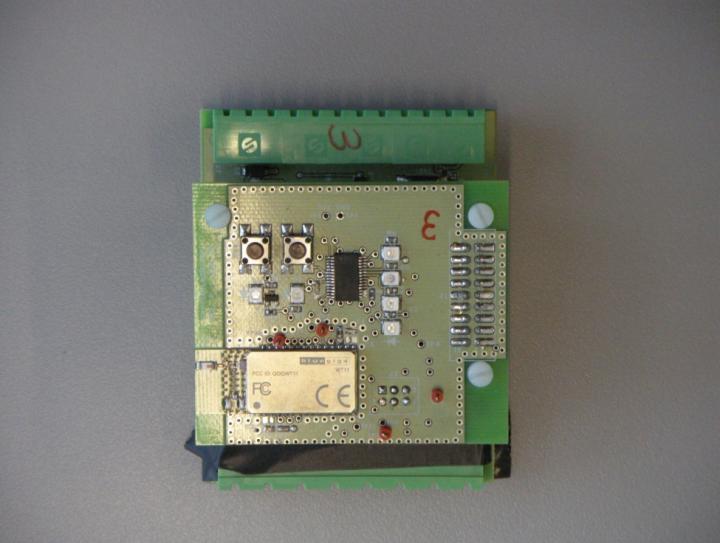This news release is available in Spanish.
"Let's suppose that we need a system for monitoring vital signs in a home for the elderly; preferably a wireless system. Using the deployed standard, the sensors that will be communicating via Bluetooth are connected to each other. "The elderly individuals in the home are fitted with these sensors which are used to measure their body temperature, heart rate, etc. and to forward the data to the nursing department," pointed out Josu Etxaniz-Marañón. "Time is a critical factor in a network of this type, and the interval that elapses between measuring a person's heart rate and receiving the data should be as short as possible", he added. Etxaniz, a member of the UPV/EHU's Electronic Design Research Group, has studied transmission times and delays in Bluetooth networks.
"The standard Bluetooth can work in various ways", said Etxaniz. "In one of them the node links are permanently open. These nodes (the so-called 'support nodes') gather and transmit the information". However, in other modes of working, these nodes switch themselves off from time to time when they are not working. "Energy consumption is lower in these nodes, which are more suited to cases in which the nodes cannot be permanently connected with the network," explained the researcher. Etxaniz has studied and compared these ways of working to find out how they affect the speed at which the information is transmitted when they are operating in network mode.

This is a Bluetooth 2.0 node developed by the GDE.
(Photo Credit: UPV/EHU)
The research group has designed for this purpose a hardware platform with specific cards that communicate via Bluetooth and form networks. "We have transferred the data from one end of the network to the other, and then brought them back", said Etxaniz. In multi-hop systems (the ones studied by Etxaniz), the data pass through more than one node as they make their way towards the "finishing post".
This researcher has carried out numerous tests with the platforms and changed the parameters that could affect time performance: how the connections between the nodes work, type of data chunk assigned by the standard used for communications, etc. Apart from the platforms, he has developed two specific methodologies for gathering information on the times. He has also determined the behaviour of some of the support nodes of the standard Bluetooth, as well as how the data processing and communication tasks affect the general delay. "One of the results which attracted our attention most was when we confirmed that there isn't the slightest delay when the nodes are permanently on; on the other hand, the delay varied between one hop and another", stressed Etxaniz. In this mode of working, the delay displays a parabolic trend. According to Etxaniz, it is essential to take this factor into consideration so that the Bluetooth networks can be effective.
The scientific literature has devoted many pages to Bluetooth technology, but the time performance of the support nodes on the hardware platforms has received very little attention. Until now, no proven empirical models on hardware platforms have been published (from the lab to the real world) to predict the time lag in multi-hop networks. The empirical model (the first one) resulting from the study of the results carried out by the UPV/EHU's Electronic Design Research Group puts forward the key equations to predict the time lags. According to Etxaniz, "the trends analysed and the analysis method used can be applied to any Bluetooth network".
Source: University of the Basque Country